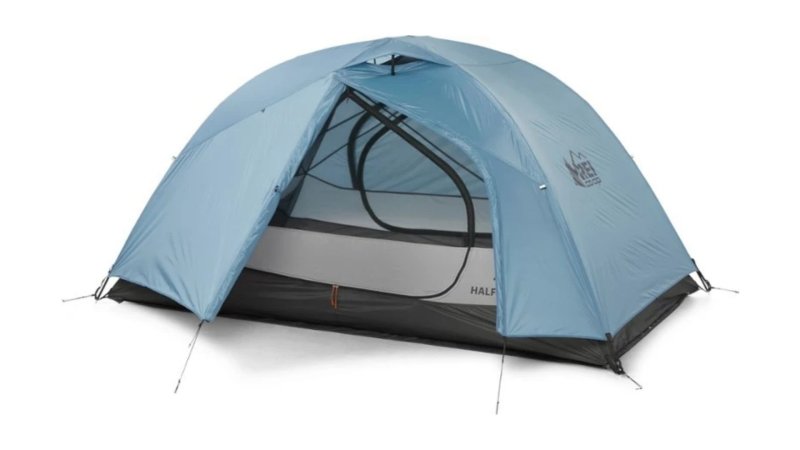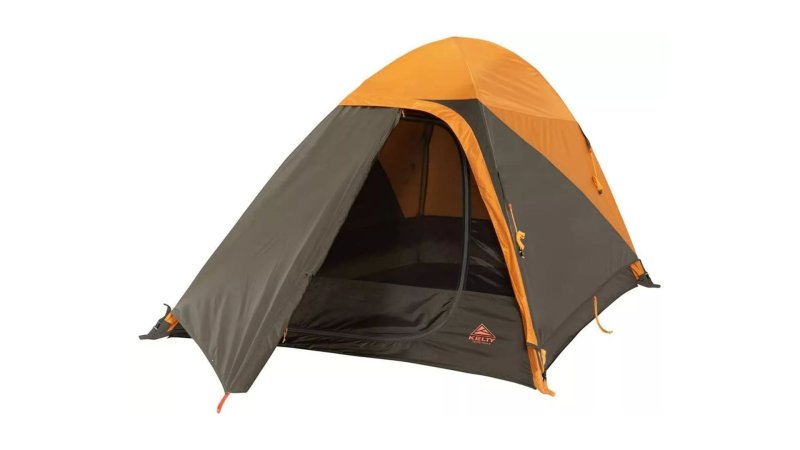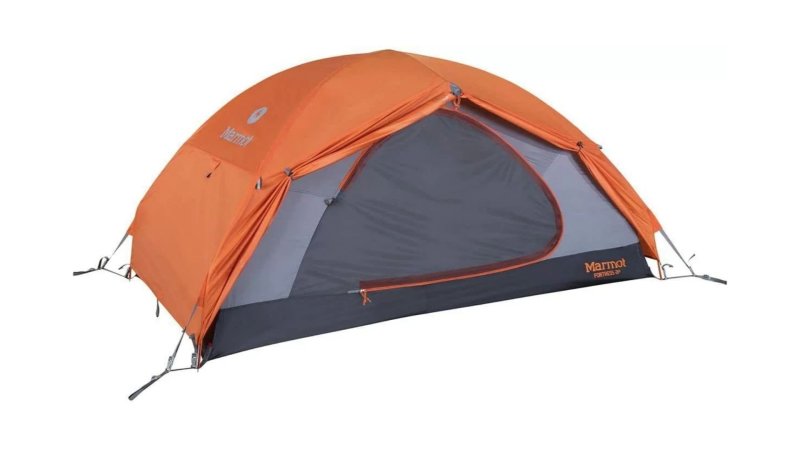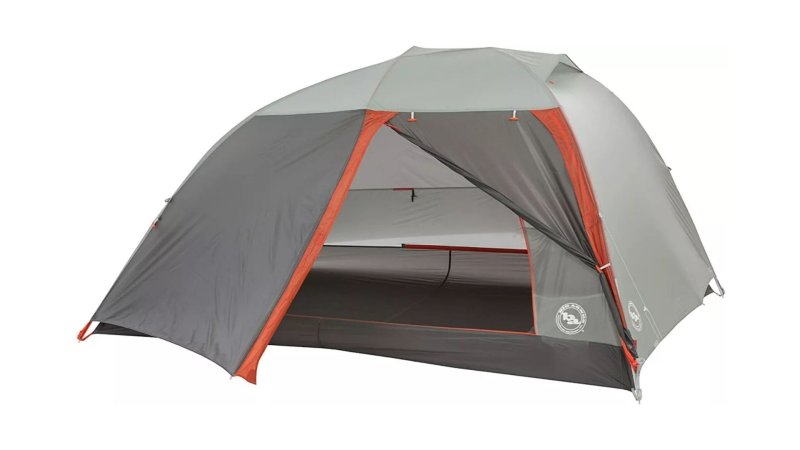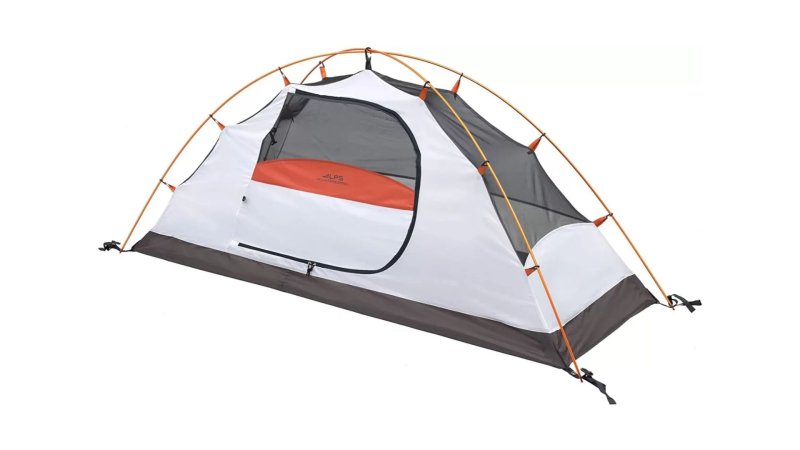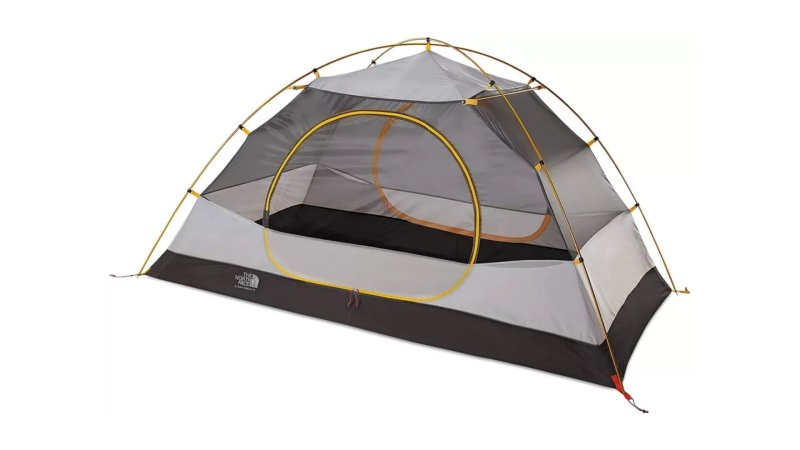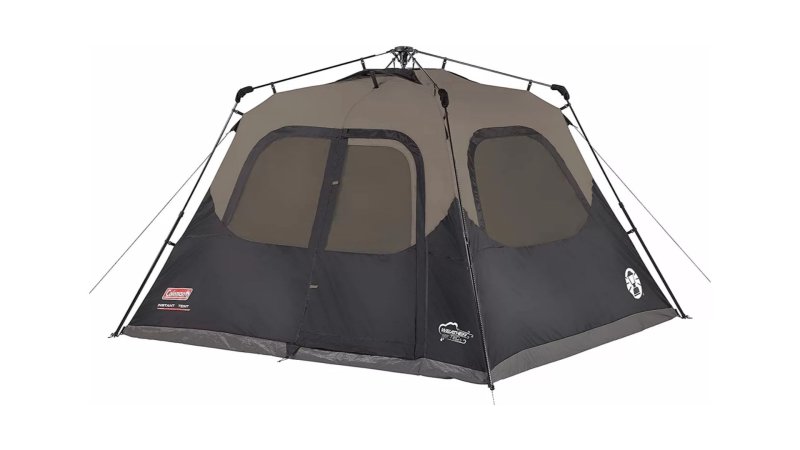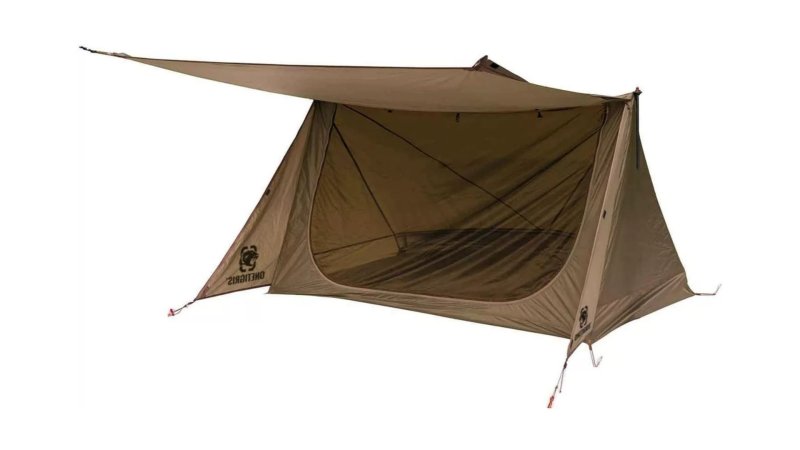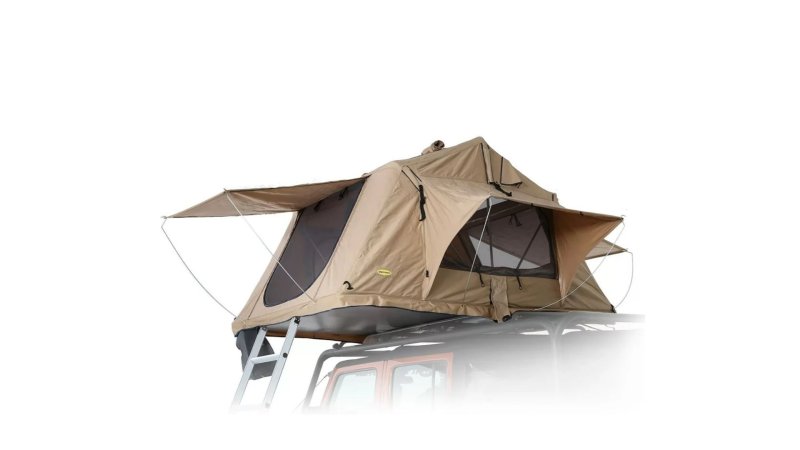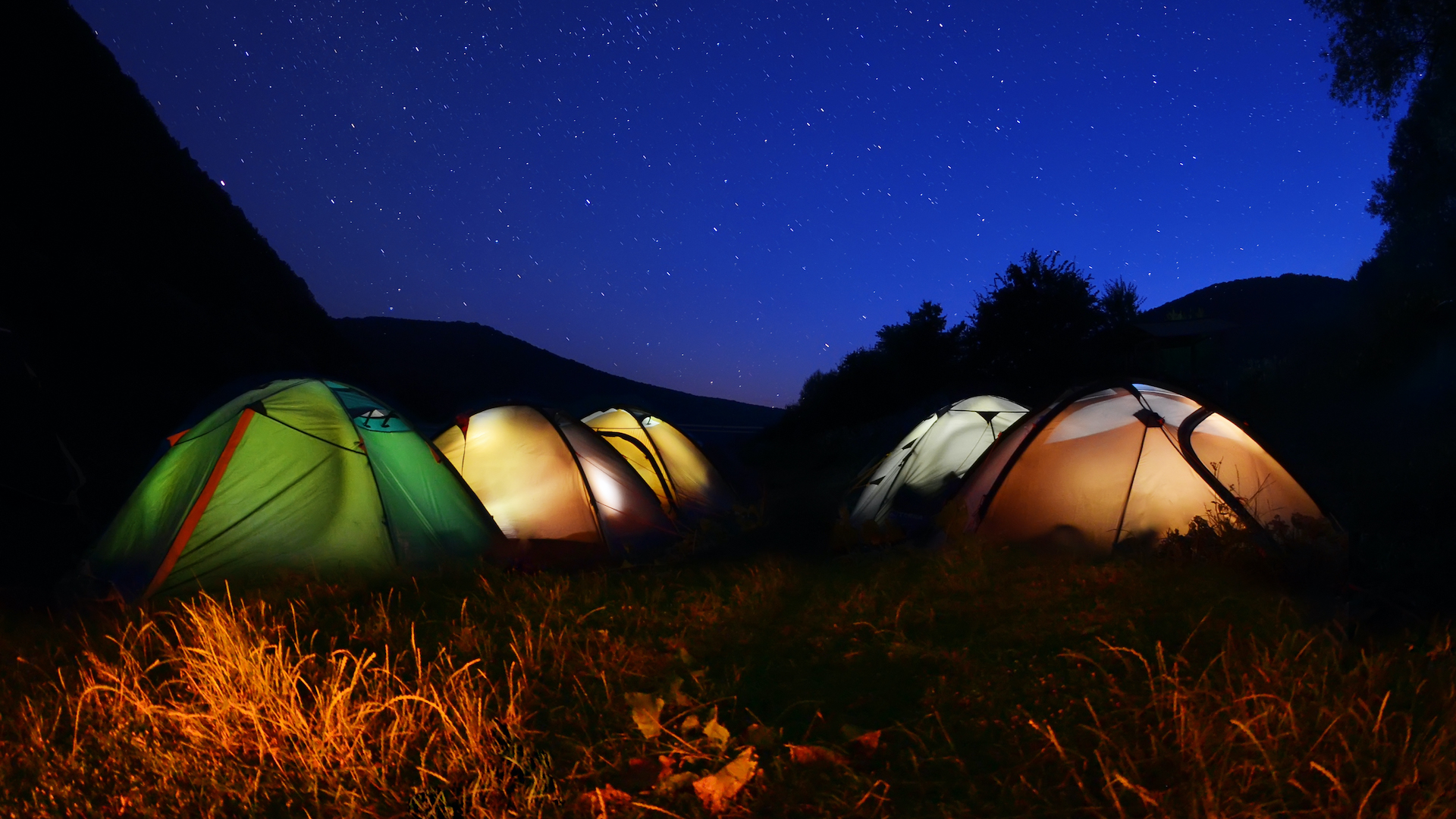

We may earn revenue from the products available on this page and participate in affiliate programs.
The first time I hauled a camping tent into the wilderness on my own, I remember being a little irritated. Compared to my trusty Marine Corps poncho, tents are bulky and heavy. It also seemed like a weak move to bring such a structure into the woods.
I felt differently after the torrential rain hit. High in the Sierra Nevadas, the sky opened up with an onslaught of heavy rain that lasted most of the night. Even with running water flowing around and under my tent, the inside stayed nice and dry. That was a blessing because low temperatures would have spelled disaster for wet gear and forced me to make a forced hike more than 10 miles back to the trailhead.
I woke up the next morning not exactly rested, but with a newfound appreciation for a good tent. Maybe my poncho wasn’t the best option, after all. Take a lesson from my precautionary tale and set yourself up with the best camping tent you can get your hands on from the beginning.
Methodology
Our team of writers has received all kinds of tents, backed by military experience in the field and civilian exploits all over the U.S. This time, I pulled some of the best camping tents from past gear roundups of backpacking tents, cabin tents, and occupancy-specific tents for solo campers, all the way up to whole families. We’re all about saving money, but sometimes spending less actually costs more in the long run. To avoid that pitfall, I limited this list to tents from the best manufacturers. In the case of tents I haven’t seen for myself, I consulted forums and industry professionals to get informed opinions of those who have.
Best Overall
REI Co-Op Half Dome SL 2+
Pros
- REI Co-Op products always seem to punch above their weight
- A few extra square feet compared to most two-person tents
- Rainfly and groundsheet included
Cons
- Great value, but still not cheap at more than $300
- Can’t quite hang when the weather gets really bad
- Pre-bent poles might be tricky to pack
Product Specs
Best Value
Kelty Grand Mesa
Pros
- All the essentials without the upcharge
- Cuts costs, not quality
- Perfect for new campers on a budget
Cons
- Not on par with higher-end tents’ materials and features
- Features are limited to the essentials
- Waterproofing reviews are hit or miss
Product Specs
Editor’s Choice
Marmot Fortress
Pros
- Aluminum tent poles are light and very strong
- Enjoy extra privacy from the non-mesh walls
- Ready for a storm even without a groundsheet
Cons
- Privacy comes at the cost of your mountain view
- Efficient setup takes a little more practice than usual
- Requires frequent camping trips to pay itself off
Product Specs
Best Luxury
Big Agnes Copper Spur HV UL3 mtnGLO
Pros
- Built-in lighting and pockets for electronics
- Vestibules and awnings to keep your gear dry
- Designed to be set up by one person
Cons
- Several times more expensive than comparable tents
- Strength may be sacrificed in the name of shedding weight
- Asymmetric roofline is a matter of preference
Product Specs
Best for Solo Campers
ALPS Mountaineering Lynx
Pros
- Light and compact enough for one person, but very well-built
- Super easy to set up by yourself
- Built to withstand the elements
Cons
- Almost no room for gear
- Not that much lighter than a two-person tent
- No windows and only one doorway
Product Specs
Best Two-Person
The North Face Stormbreak 2
Pros
- Get a rugged tent that doesn’t blow the budget
- Larger doors than the previous iteration for easier access
- Taped seams on the rainfly and floor keep water out
Cons
- Sells out fast, so act now
- Almost six pounds for a two-person tent
- We have to assume there’s a logo tax priced in
Product Specs
Best for Families
Coleman Six-Person Instant Cabin
Pros
- Steep walls result in lots of usable space
- Tall enough for most people to stand up in
- Large mesh windows and privacy covers
Cons
- Fairly heavy at nearly 25 pounds
- No removable rainfly or groundsheet
- Restricted airflow when sealed up in bad weather
Product Specs
OneTigris Backwoods Bungalow
Best A-Frame
Pros
- Light, compact, and simple
- Lack of poles makes it easy to pack
- Low profile and subtle color are great for a go-bag
Cons
- Reliant on trees, trekking poles, or sticks for structure
- Amenities are very primitive
- Less sturdy in bad weather than our other picks
Product Specs
Best for Cars
Smittybilt Overlander
Pros
- Go further, faster in the comfort of your vehicle
- Be ready for any weather, and any season
- Sleep off the ground and away from critters
Cons
- Requires a roof rack (and a vehicle)
- Negatively impacts fuel economy
- More difficult to get in and out of than a normal tent
Product Specs
Our verdict on camping tents
There are more great camping tents than we can count, but we stand by these top-rated tents as some of the best camping tents on the market. The REI Co-Op Half Dome SL 2+ is such a versatile crowd-pleaser that it’s bound to satisfy just about anyone. The Kelty Grand Mesa proves that you can get outside without breaking the bank. We’re sure there are others out there, so let us know what your favorite camping tent is in the comments section.
What to consider when buying camping tents
It’s important to do your homework when trying to find the best camping tent for you. Here are some of the factors you need to consider to make an educated decision and get the most bang for your buck.
Types of camping tents
A-frame tents
Back in the old days, A-frame tents were the way to go. They’re easy to make, do a decent job of protecting you from the elements, and don’t cost a lot. This style is still available in tents like the OneTigris Backwoods Bungalow, although it’s evolved to use lighter materials and offer more weather protection. Compared to more modern pop-up tents, A-frames are heavy and bulky. While they might offer more room, they also take up more space in your pack and add weight.
More often than not, you’ll see the principles of A-frame tents applied in the field with a tarp and some 550 cord. I’ve only gotten to use a tent during one field exercise, but I’ve spent more nights than I remember under a tarp stretched between trees. It isn’t luxurious, but it works and you should know how to make this kind of shelter with and without trees. If you want to go full survivor mode, practice fashioning an A-frame shelter from sticks and vegetation.
Backpacking tents
Backpacking tents are probably the most popular style of tent available today. The realities of traveling across rugged terrain by foot require them to be light and compact; but, at the same time, they need to be durable and offer protection against the weather and unwanted pests. Backpacking tents and camping tents like The North Face Stormbreak series are built to withstand mother nature without weighing you down.
To keep weight to a minimum, backpacking tents use advanced, rip-resistant fabrics that wick away moisture to prevent condensation inside. Tent poles are usually made from aluminum with internal bungee cords to simplify set-up and tear-down. Removable rain flies add shelter when you need it, and leave a clear view of the night sky when you don’t. All of that requires high-end materials and design, so backpacking tents and camping tents aren’t inexpensive. After a night on the trail, though, you’ll appreciate why that’s the case.
Cabin tents
If space is a priority, cabin tents are the way to go. Not only do they typically offer more floor space than a camping or backpacking tent, but they offer much more headroom as well. You might even be able to stand comfortably inside your cabin tent. Extra space and sturdy construction make cabin tents great for families who want to keep parents and kids under one roof.
The downside of all this real estate is extra weight. Cabin tents are heavier and much bulkier than other kinds of camping tents. We definitely wouldn’t want to hike with one, so your best bet is to save the cabin tent for weekend stays at a more established campsite that’s accessible by car or UTV.
Key features of camping tents
Rainfly
If your tent can’t keep the rain out, it isn’t doing much good. Most modern tents are made from breathable, lightweight mesh that works like a screened porch. They keep bugs away while you sleep, facilitate airflow, and offer a great view of the wilderness you came to see in the first place. In the event of bad weather (or just to get more privacy), you’ll want to use a rainfly. These waterproof covers are provided with backpacking and camping tents, and they include zippered doors and windows to match the ones on your tent.
Some tents don’t come with a rainfly, and that’s particularly common among cabin tents that aren’t as likely to be used during bad weather. In this case, manufacturers often apply a water-resistant coating that slows the ingress of water but doesn’t always work as well as a rainfly. If that’s what you buy, you might want to have additional rain repellent on standby.
Groundsheet
You may not need a groundsheet for your tent, but it’s a good piece of gear to have if you spend time in the backcountry. Ground that’s covered in rocks and roots can take a toll on even the best tent, and a groundsheet adds a layer of protection. They’re made from thicker material than the rest of the tent and, if they do tear, can be replaced individually for a lot less than it would cost to get a new tent. Even if you don’t need your groundsheet between your tent and the ground, it can be used to cover your gear during a storm or create a backup shelter during an emergency.
Guylines
Freestanding tents provide their own structure, but you’ll still want a way to secure the tent and rainfly to the ground — especially if you encounter wind stronger than a breeze. Guylines typically attach to metal grommets on the rainfly — usually at each corner and on the vestibules. It’s important to install and anchor your guylines properly.
Collapsible poles
Every tent needs a rigid structure to hold its shape. Unless you anchor the corners to trees with taught guy lines, you’ll need tent poles. Backpacking tents use collapsible tent poles that break into segments (usually 12 to 18 inches long) that are held together with an internal bungee cord. That makes for a quick and easy assembly and disassembly. They’re usually made from aluminum and sometimes use color-coding to denote where each pole belongs.
Minimalist tents like the ALPS Mountaineering Lynx save weight and space by relying on trekking poles for support. That’s a great way to get the most out of your gear — as long as you use trekking poles. If all you have is a tarp, you’ll be stuck with cutting tent poles from sticks the old-fashioned way.
Pricing
The best camping tents usually range from about $100 to $300, with more extreme-weather variants and rooftop tents climbing from there. You can also spend closer to $100 if all you need is a basic one-person tent like the ALPS Mountaineering Lynx. Most of the tents you’ll see on the trail or around an established campground cost roughly $200. The North Face Stormbreak 2 is a good basis for comparison.
Tips and tricks
We’ve spent enough nights under the stars (and snow, and rain) to learn a thing or two about getting the most out of your tent. In addition to using it more effectively, there are also important steps you can take to protect your investment. To help you climb that learning curve a little more easily, here are a few pro moves we’ve learned along the way.
- If a tent is rated for two people, it might feel cramped. I sometimes recommend sizing up when possible. Larger tents of the same product line don’t weigh that much more than their smaller siblings (especially split between two people) and the extra room is nice.
- Don’t wait until you’re at your campsite — tired and hungry — to set up your tent for the first time. Practice at home to get the hang of it and learn a few tricks specific to your tent and gear.
- Spread-load your tent when you can. Everyone who uses the tent should carry part of it. The tent itself, poles, stakes, groundsheet, and rainfly may even have their own stuff sacks to make this easier. Just remember to take a good inventory before you leave in the morning.
- Pay attention to the weather when you set up your campsite. Be mindful of things like wind direction, signs of water drainage, and dead branches that might fall.
- Like any piece of gear, keep your tent clean. Follow the manufacturer’s instructions and make sure it’s bone-dry before packing it away until your next trip.
FAQs on camping tents
You’ve got questions. Task & Purpose has answers.
Q: What size tent do I need?
A: Tents are rated for a certain number of occupants. Those ratings often indicate how many can fit inside rather than how many would want to fit inside. We sometimes recommend sizing up if you have more than one person.
Q: Are tents good for all seasons?
A: Any tent is better than no tent, but they aren’t designed for every climate. The best three-season tents work in most temperature ranges, but hardcore winter camping will require something specifically designed for extreme cold. An insulated tent liner like the Crua Outdoors Culla Maxx is another option.
Q: What is the best camping tent style?
A: It’s hard to say that any given tent style is the best, but we’re pretty partial to a good backpacking tent. They’re versatile, light, and strong. That being said, they may not be the best for you. That’s why we included other options like A-frames, cabin tents, and rooftop tents.
Q: How much space does a tent need in my pack?
A: Tents pack down to a pretty compact size, but that will vary from tent to tent. If you’re sharing your tent, it’s a good idea to share the job of carrying all its pieces.
